ancient egyptian archaeology quiz 2
1/73
There's no tags or description
Looks like no tags are added yet.
Name | Mastery | Learn | Test | Matching | Spaced |
|---|
No study sessions yet.
74 Terms

duat
liminal realm of the dead & rebirth
where the judgement hall is; otw to Field of Reeds
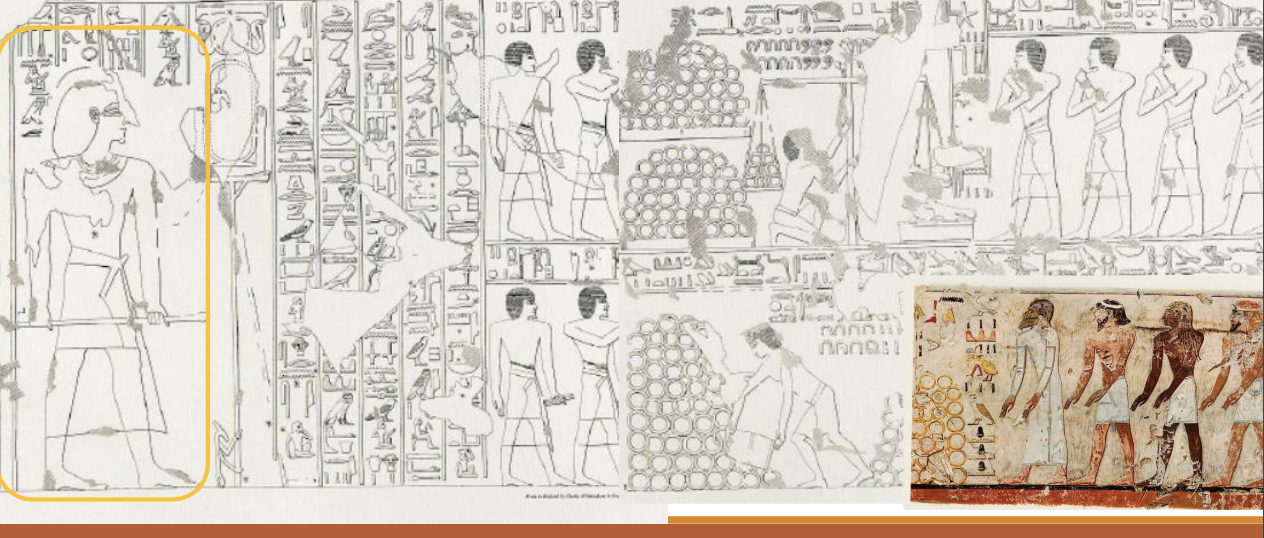
tomb painting - foreign chiefs bring gold for temple of Amun
rulers of foreign lands
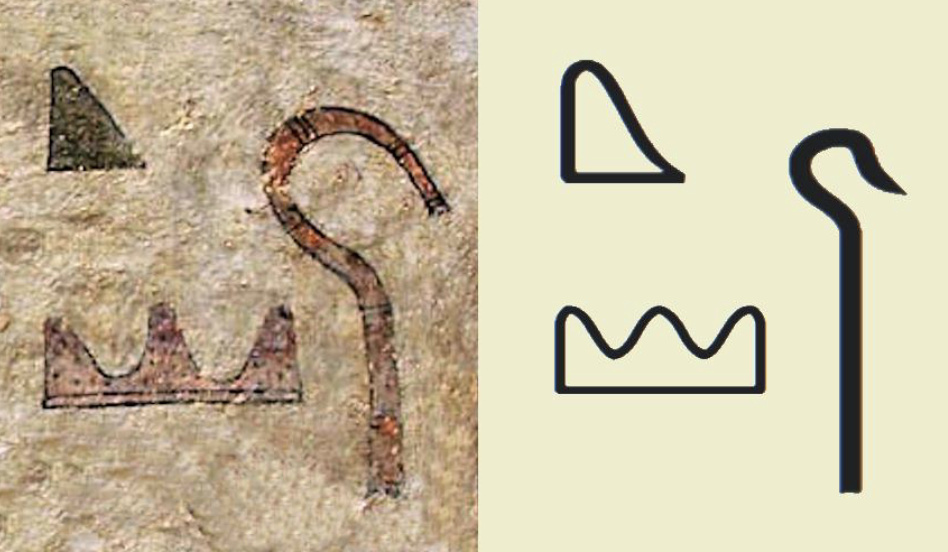
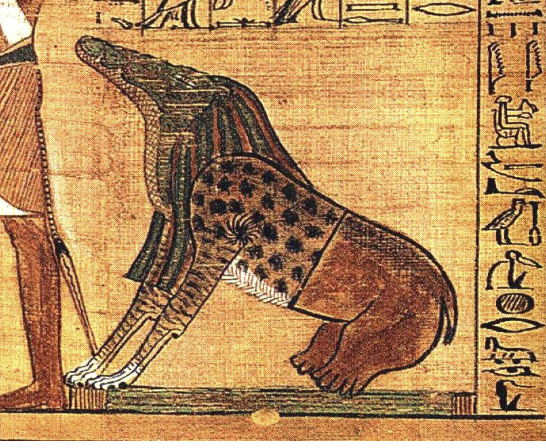
Ammit/Ammut
“devourer of the dead” / “eater of hearts”
demon/deity that would eat the hearts of those not deemed worthy of afterlife during the weighing of the heart ceremony
IMAGE 4/28 p.51
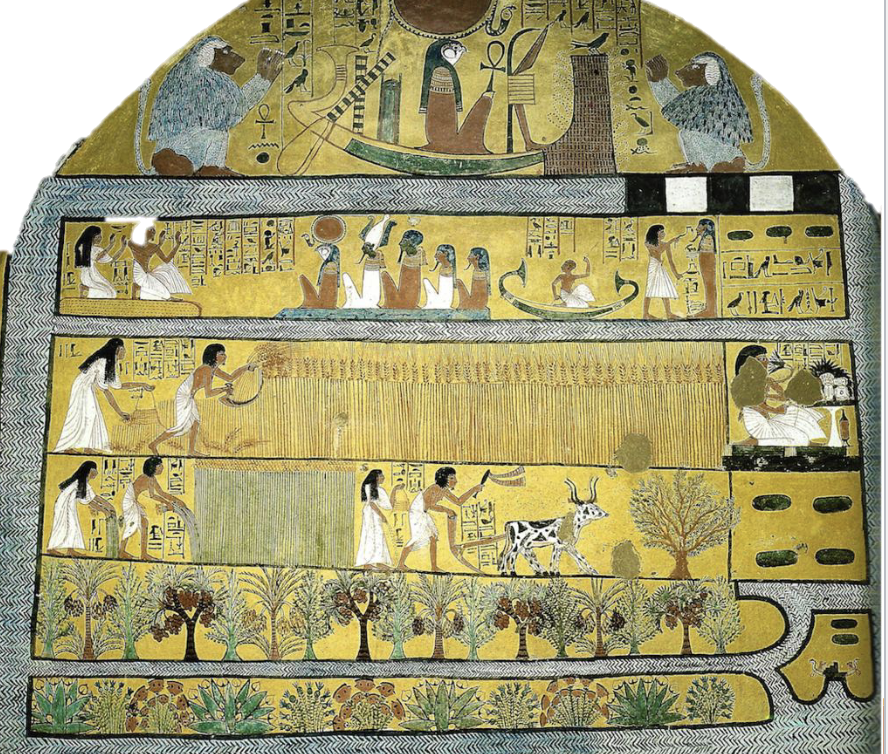
field of reeds
paradise afterlife for those deemed worthy
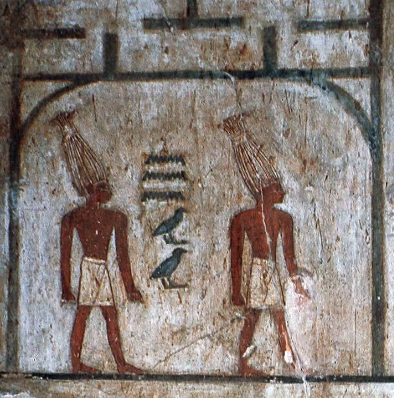
muu dancers
“marsh dwellers”
danced at threshold of the tomb during funerary ceremonies
helped to escort deceased into afterlife
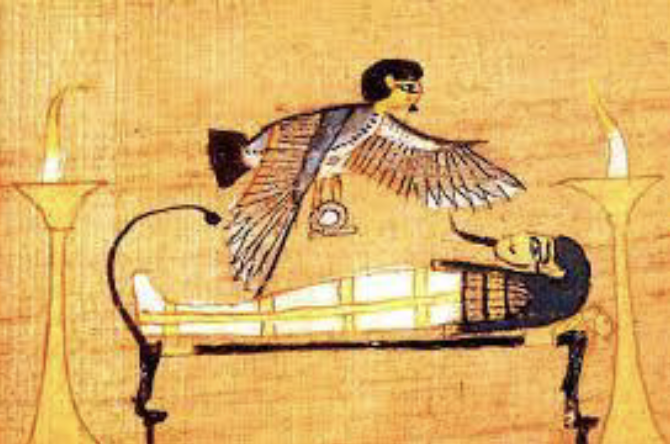
ba
personality/individuality
leaves body by day, returns at night
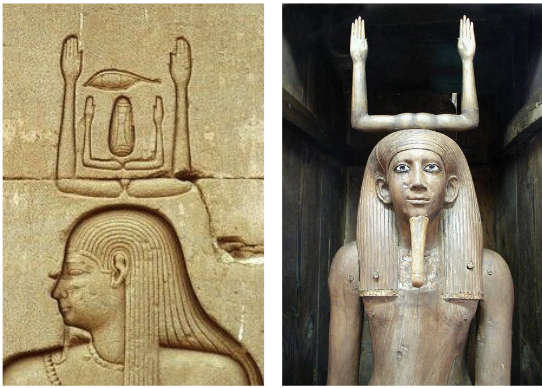
ka
life force - distinguishes living from dead
needs nourishment after death
stays near tomb after death to receive offerings
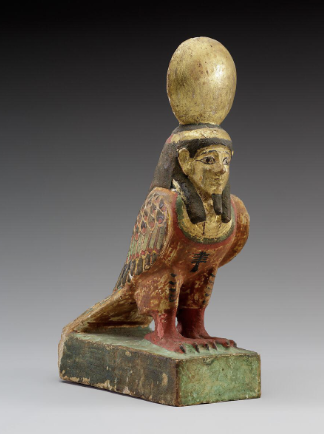
akh
spirit/immortal self
formed when ka & ba reunite thru funerary rites
ren
name/identity
remembrance of name crucial for continued existence
shuyet (shut)
shadow; part of person/soul
invoked for protection/breaking curses
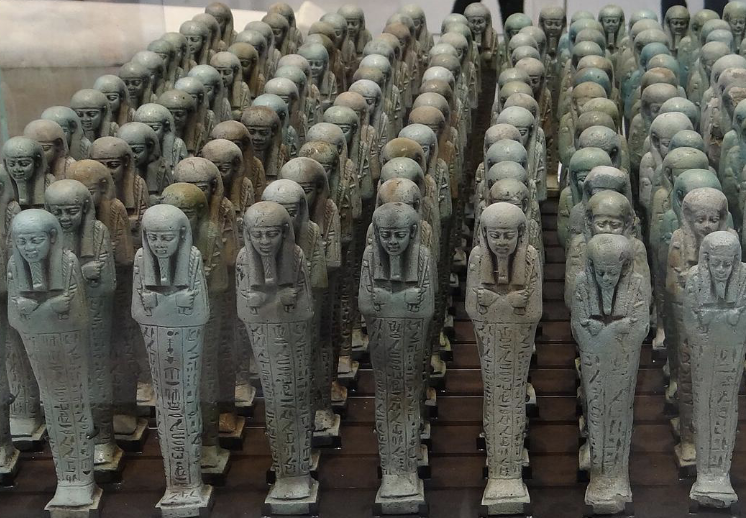
shabti statue
substitutes for deceased
work for deceased in afterlife
appear in MK, common in NK
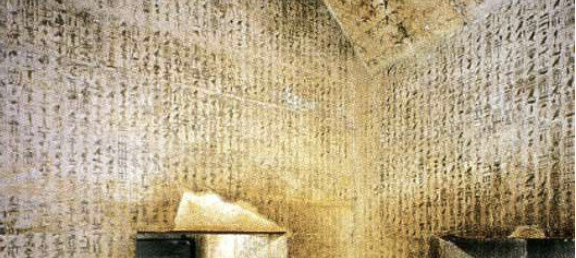
pyramid texts
OK stone texts for king’s only
symbolize:
protection of king
ascension to the sky
reunite the ka & ba
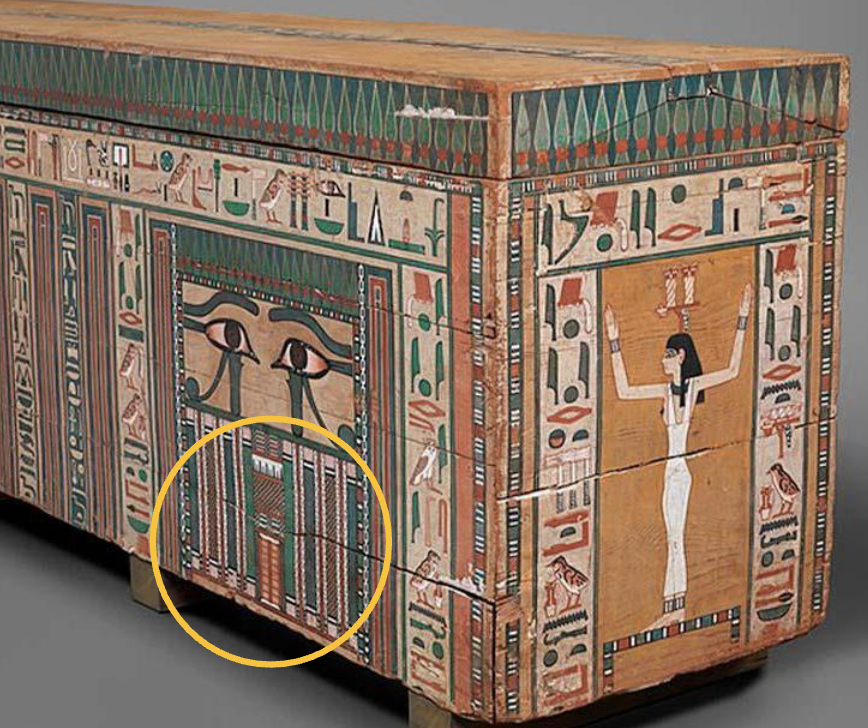
coffin texts
MK wood texts for royals & nobles
copied inside & outside coffin
‘guidebooks’ to the underworld
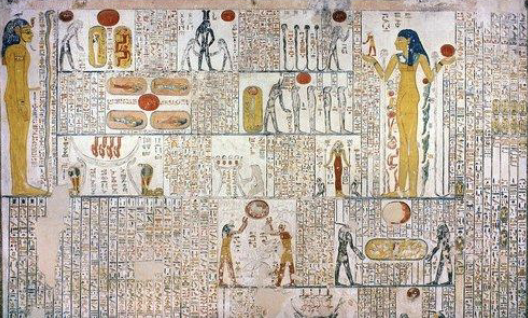
books of the dead
NK papyrus afterlife books (replacing coffin texts)
for anyone that could afford
mass produced, personalized
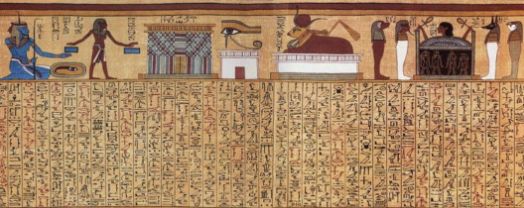
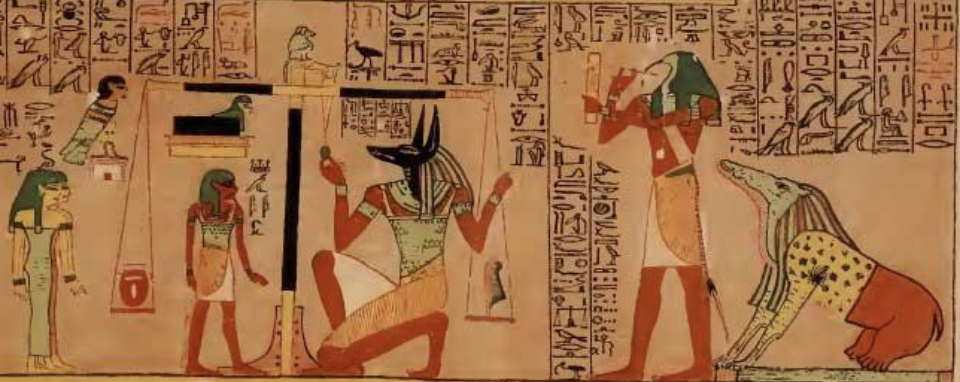
weighing of the heart ceremony
determines who is worthy of the afterlife
field of reeds or oblivion
occurs in judgement hall in duat
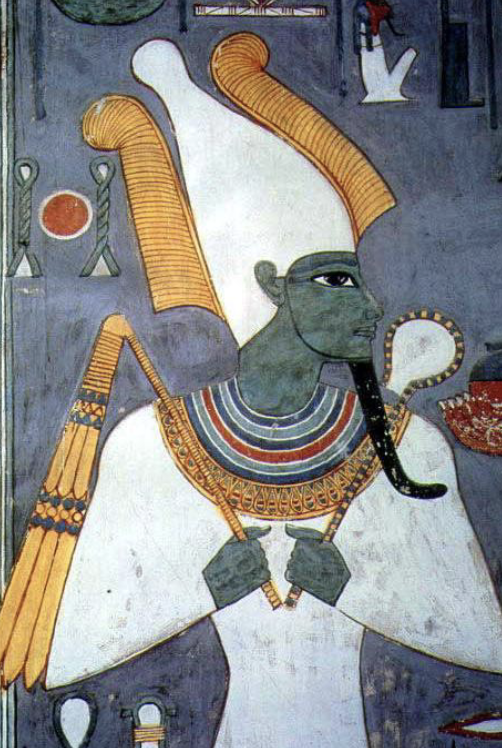
Osiris
king of underworld
exemplifies rebirth thru death

Nephthys
“sacred enclosure”
represents mourning, boundaries, protection

Isis
“throne”
represents magic, motherhood, rebirth, protection
natron
divine salt used in mummification process
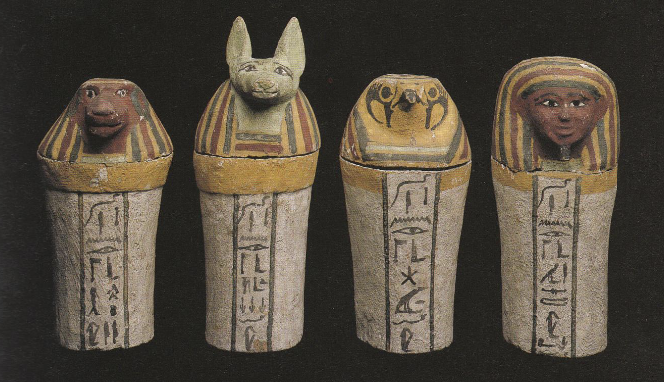
canopic jars - “four sons of horus”
4 jars where organs removed & stored to preserve function for afterlife
Hapi
Duamutef
Qebehsenuef
Imsety
canopic jars - Hapi
form: baboon
protects: lungs
canopic jars - Duamutef
form: jackal
protects: stomach
canopic jars - Qebehsenuef
form: falcon
protects: intestines
canopic jars - Imsety
form: human
protects: liver
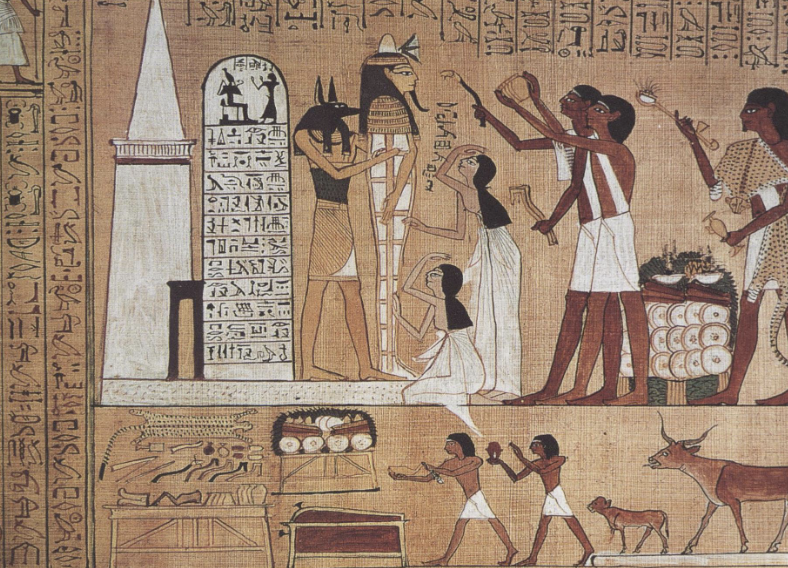
opening of the mouth
ritual performed to restore deceased’s senses in the afterlife
performed by priest dressed like Anubis
started in OK
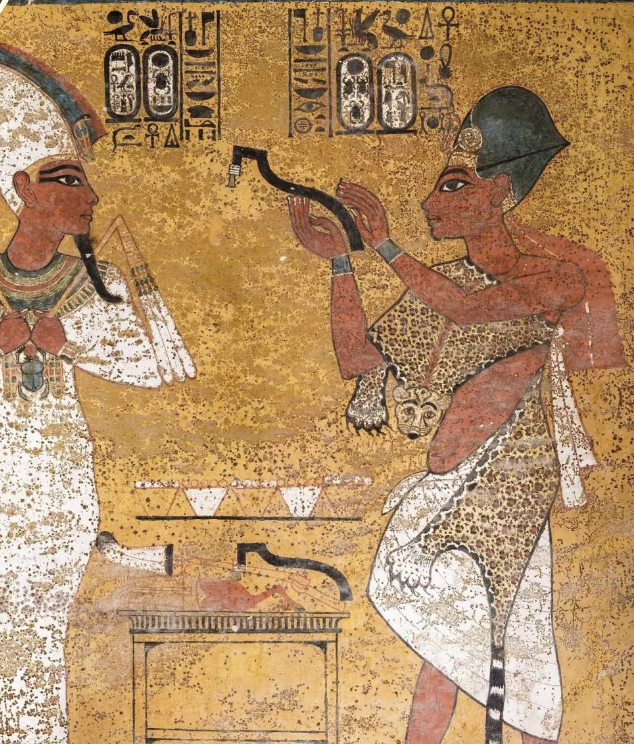
coffin
container that directly holds body of deceased
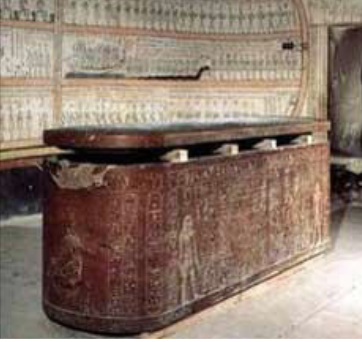
sarcophagus
container holding the coffin; decorated w inscriptions/spells
animal mummy
can be…
food for deceased
pets of deceased
cult animals
votive offerings (to god)
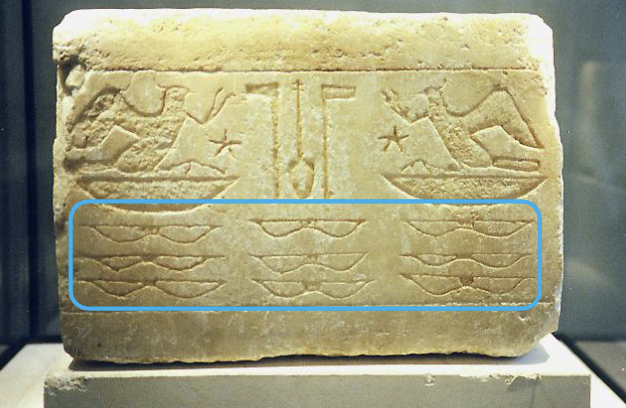
nine bows
an expression of totality of egypt’s enemies
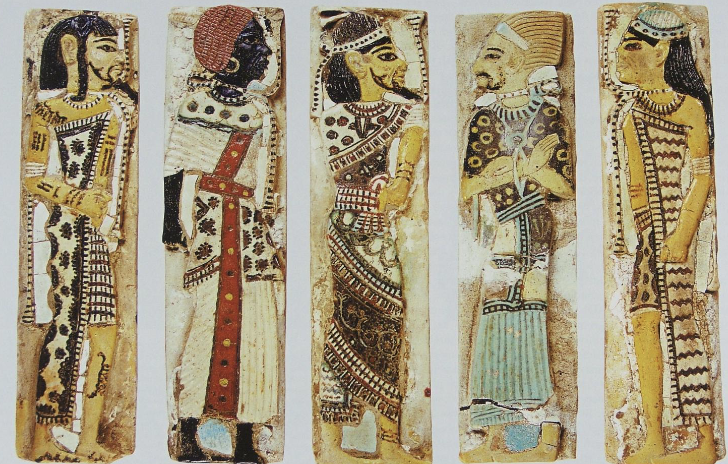
prisoner tiles
tiles depicting bound foreign enemies
put in floors & thresholds to “step on them” symbolizing egypt’s power
subdues isfet
Hyksos
foreign rulers in avaris of 15th dynasty (end of MK)
introduced things like horses, chariots composite bows
different than typical egyptian rule
rule ended w rebellion → hyksos fled or absorbed
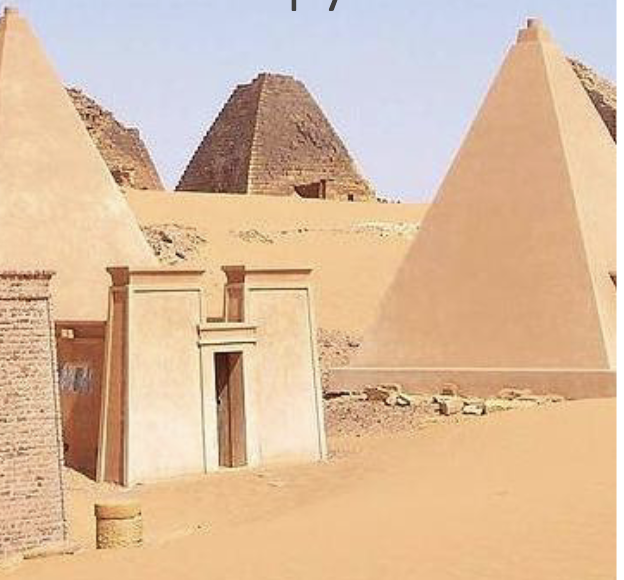
nubian pyramids
inspired by egyptian pyramids but w unique nubian style
smaller & steeper
tombs for kings, queens, elites
nubian forts
MK forts along nile to…
control trade routes
monitor southern border
project powerful image
why did egypt want to control nubia?
GOLD (& other resources)
plains forts
earliest fort type across river from nubian settlements
population: soldiers & families
barrack forts
smaller & built later
population: soldiers only
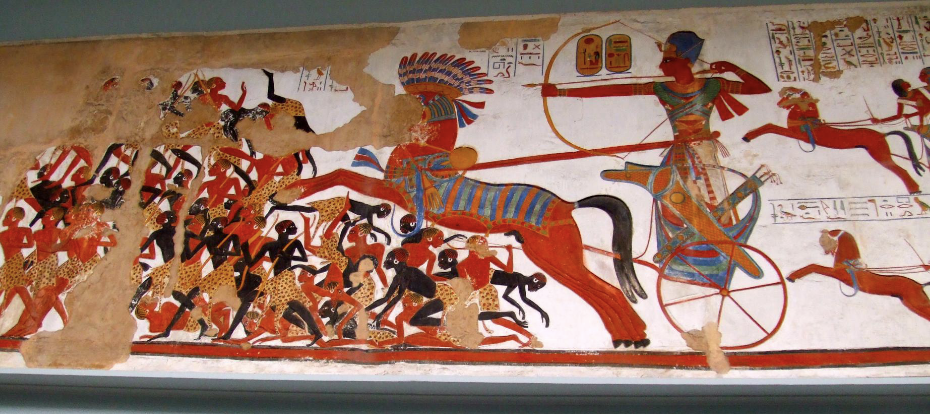
battle of Kadesh
Ramesses II (egypt) vs. Muwatalli I (Hittites)
sources: visual scenes, letters, records, poem
outcome: Hittite claims to have won
Kadesh peace treaty: less about peace, more abt mutual benefit & stability
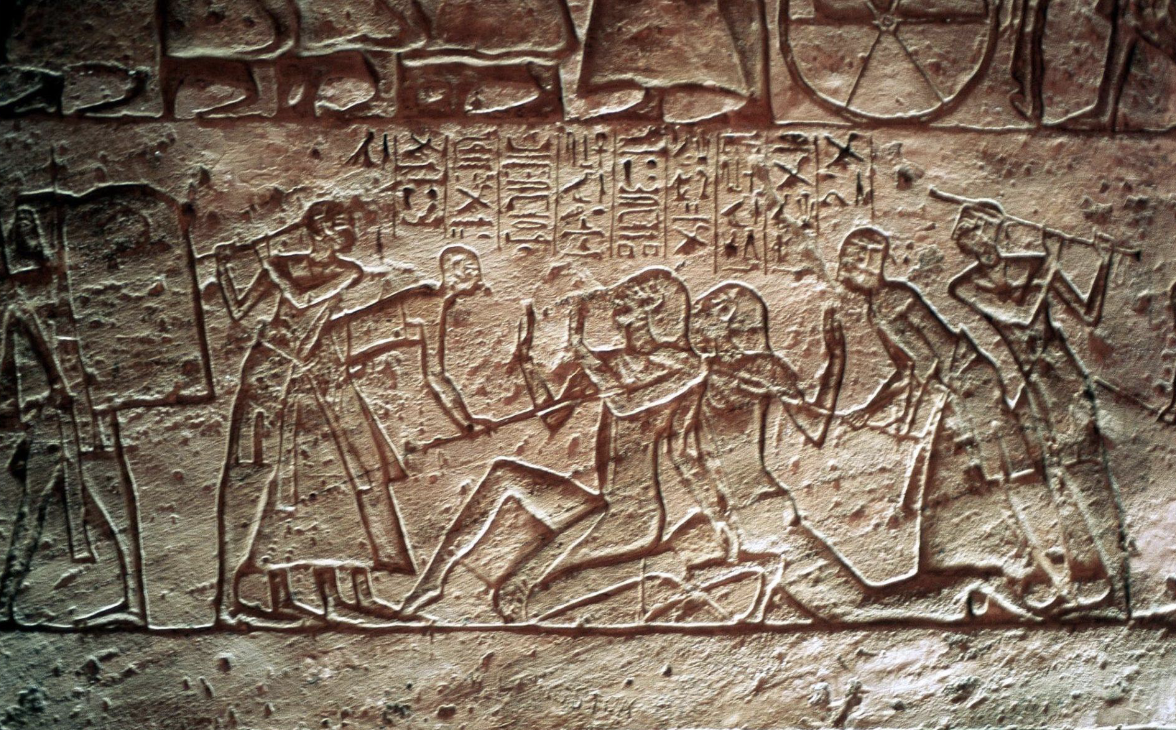

sea peoples
enemy coalition of different ethnic groups
foreign invaders from the west

amarna letters
correspondences between egypt and foreign rulers
demonstrate diplomacy, brotherhood, threats, flattery, begging
organic towns
unplanned growth - advantageous location
long-term occupation
capital cities
poorly preserved
artificial towns
state planned
purpose-specific
short lived
pyramid towns, workmen’s villages, fortresses
1 capital city: amarna
better preserved
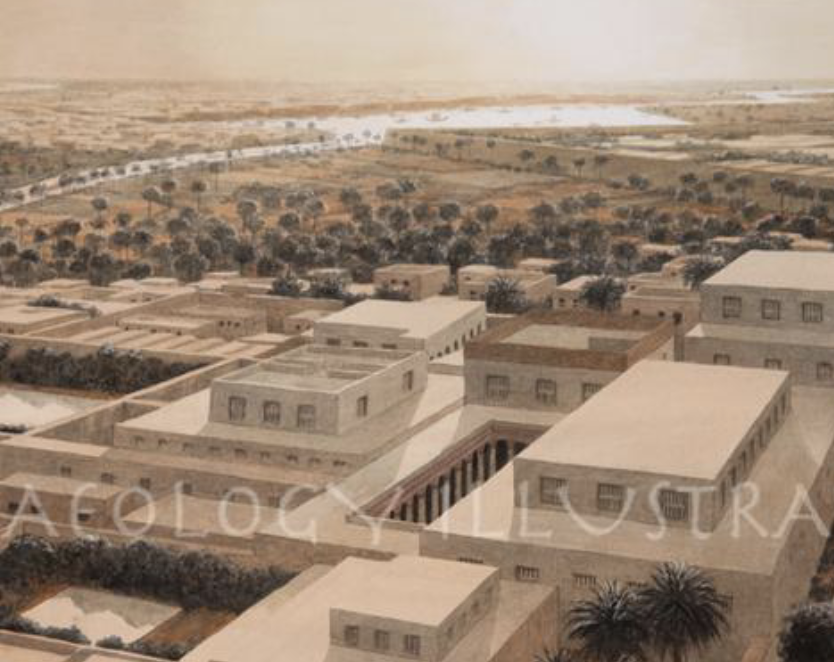
Avaris
Hyksos capital city
best known city w large foreign pop
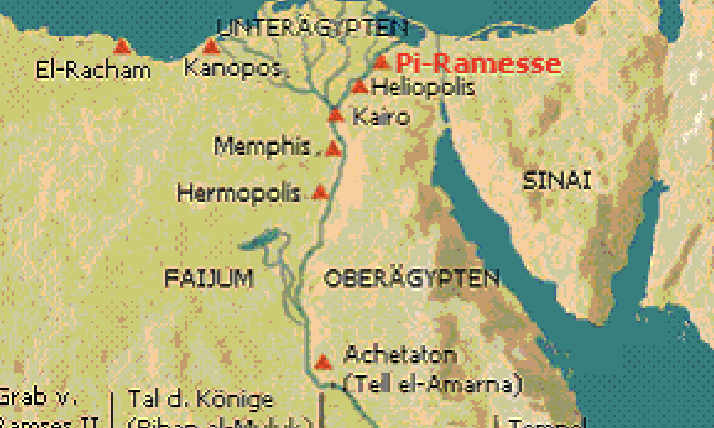
Pi-Ramesses
functional capital during 19-20th dynasty
built partially over avaris
Amarna
best preserved egyptian capital/city
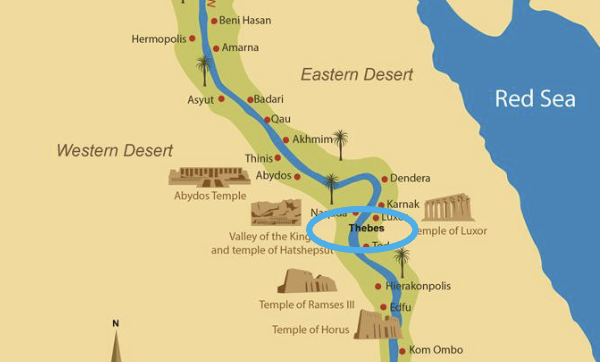
Thebes
“city of the scepter” - upper egypt
religious center of egypt
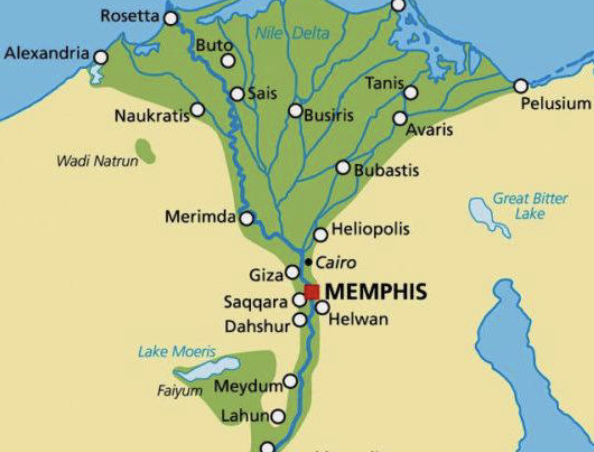
Memphis
capital of OK - lower egypt
center of trade & commerce
administrative core
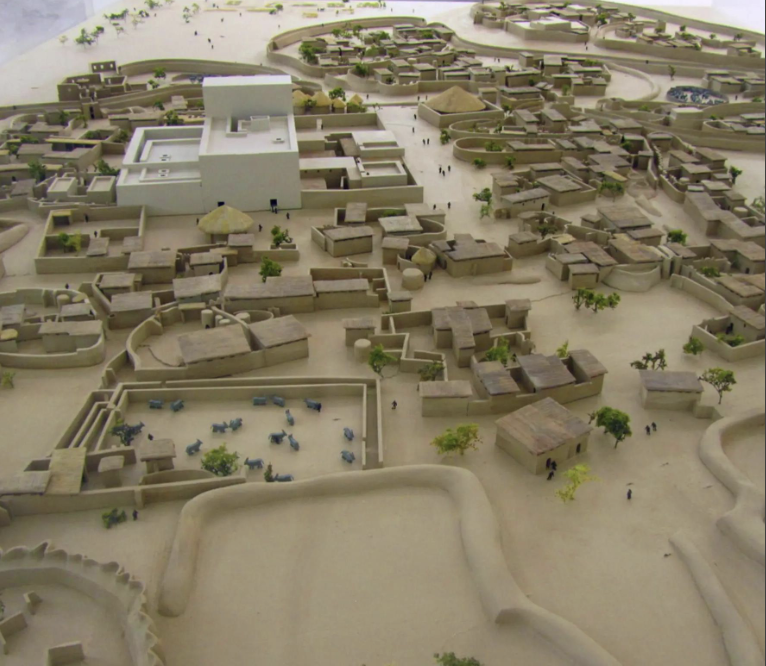
Kerma
nubian based empire, also name of culture
Wawat
lower nubia
Kushite kings (25th dynasty)
foreign rulers that restored egyptian tradition after Hyksos rule
adopted egyptian religion & kingship
Kush
formed from Kerma culture
capital at napata & meroe
upper nubia
what did egyptians believe happened after death?
soul entered duat and hall of judgement
→ weighing of the heart
→ if worthy soul enters field of reeds
→ when ka & ba reunited, akh formed
who “got in” to the afterlife?
OK: only kings (pyramid texts)
MK: elites & kings (coffin texts)
NK: anyone who could afford books of dead
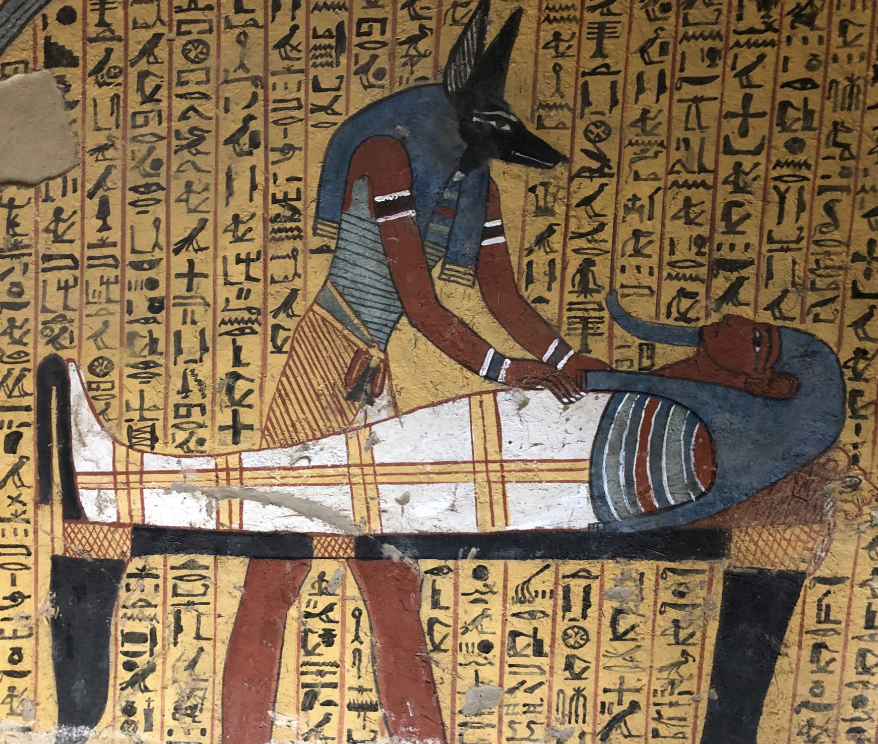
why was mummification important? (5)
preservation of body for ba, ka, akh
prep for rebirth then eternal life
prevent decay
transform deceased into divine being
purify & sanctify
how did mummification relate to ka, ba, & akh?
ka & ba needed to recognize body in afterlife
akh was the eternal spirit that was formed when ka & ba were reunited
only if body preserved & funerary rites completed
egypt vs. outside world
egypt: civilization, maat, people
outside: chaos, isfet, barbarians
how did the egyptian view of foreigners change over time?
OK: foreigners distant, inferior
MK: grew concerned about borders → nubian forts
NK: foreigners enemies to be conquered or to bear tribute
view of foreigners: maat vs. isfet
maat: foreigners bring tribute to king in elite tombs
isfet: foreigners in royal imagery subdued/conquered
what evidence of foreigners do we have?
war records
imagery
amarna letters
why did egypt go to war? (5)
conquest:
goods
incense
wood
people
political control
Give an example of a New Kingdom war. What was the outcome?
battle of Megiddo:
Thutmose III vs. Canaanite kings
source: annals of Thutmose III
outcome: Canaanite kings surrendered
=> created network where rulers of Canaan owed tribute & loyalty to egypt
urban archaeology
material remains of daily life in ancient cities
studies where and how people lived, worked, & interacted
why do we lack urban archaeology?
building materials of homes weren’t long lasting
cities were built over
archaeologists mostly focused on monumental buildings
what do towns like Lahun contribute to our understanding of daily life?
shows how urban housing and towns were designed
pyramid building ceremony
stretching the cord
scattering gypsum powder
hacking the earth
molding first brick
dedicating temple to its lord
presenting an offering
the great sphinx
oldest known monumental structure in egypt
protector of necropolis/pyramids
tomb
houses for the dead: soul & all earthly possessions
name written all over
new kingdom royal tombs
hidden tombs in valley of the kings
mortuary temple separate
private afterlife journey
tomb = engine for rebirth
old kingdom royal tombs
pyramid burial
mortuary temple included
pyramid symbolism
sun’s rays
old kingdom elite tombs
mastabas
house of eternity: focus on continuing service to king in afterlife
new kingdom elite tombs
not hidden; chapels above ground, coffin below
decorated
book of the dead & afterlife texts
new kingdom royal mortuary temples
away from tomb; near nile
purpose: glorify king & gods
often told life story of king/queen
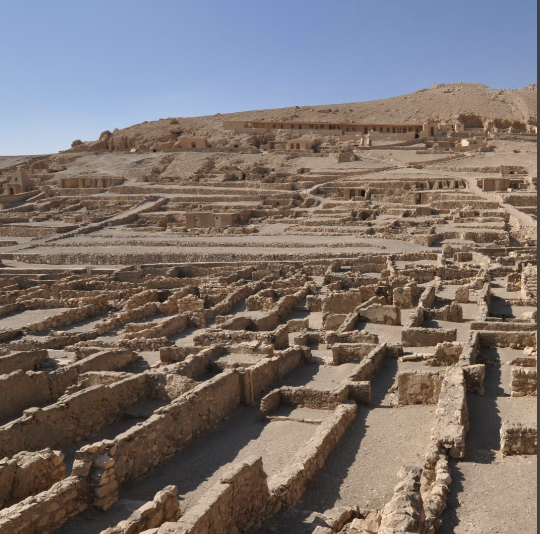
Deir el-Medina
workers’ village at Thebes
gives insight into everyday life of artisans